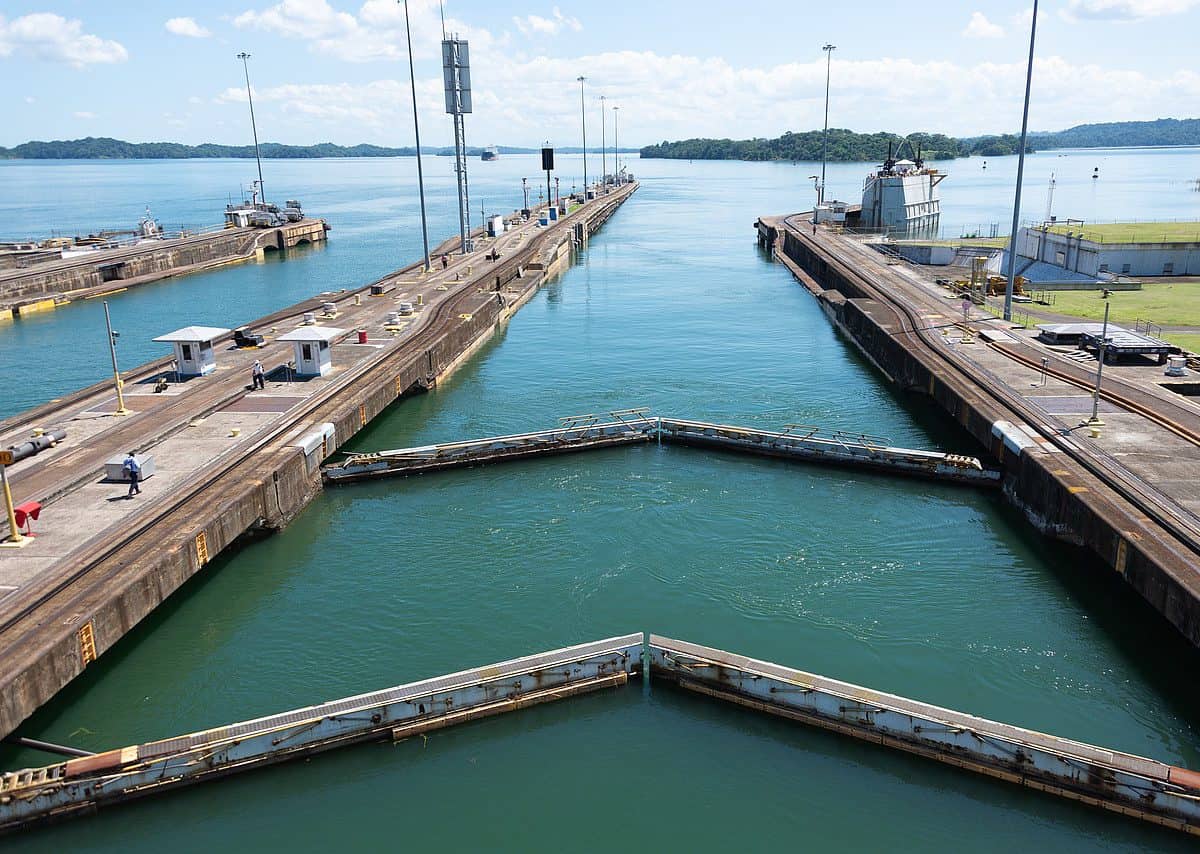The shortage of rainfall has forced the Panama Canal to reduce the draft of ships passing through the interoceanic waterway, in the midst of a water supply crisis that threatens the future of this important maritime route.
“This Lake Alhajuela is running out of water every day,” laments Leidín Guevara, a 43-year-old Panamanian freelancer who goes fishing there a couple of times a month, to AFP.
Alhajuela, along with Gatun, are the two artificial lakes that supply water to the Panama Canal, but both, in the Caribbean province of Colon, have been depleted by drought.
The situation has caused the Panama Canal Authority (ACP) to limit for the fifth time the draft of the largest ships transiting the waterway, through which 6% of the world’s maritime trade passes, mainly from the United States, China and Japan.
Strong impact
In the Panama Canal, rainwater is the energy source used to move the ships through the locks, which function like elevators, raising the ships up to 26 meters above sea level so that they can cross the continental mountain range.
The passage of each vessel requires about 200 million liters of fresh water discharged into the sea, so Alhajuela and Gatun are vital.
However, according to the ACP, from March 21 to April 21, water levels in Alhajuela dropped from 69 to 62 meters, while in Gatun they dropped from 25.6 meters to 25.2.
“The lack of rainfall impacts several things, first of all in the reduction of our water reserves,” said Erick Cordoba, ACP Water Manager.
It also affects operations “with the reduction of the draft of Neopanamax vessels, which are the largest vessels transiting the Canal” and those that pay the highest tolls, he adds.
In fiscal year 2022, more than 14,000 vessels with 518 million tons of cargo crossed the Canal, which left the Panamanian treasury $2.5 billion.
Finding water, essential
In 2019, all the alarms went off, when of the 5.25 billion cubic meters of fresh water needed by the waterway, only about 3 billion were available.
Authorities fear that due to this uncertainty, some shipping lines may decide to use other routes, so they are looking for alternatives to guarantee the Canal’s operations in the long term.
The Canal Administrator, Ricaurte Vásquez, recently acknowledged in the Panamanian digital media, SNIP Noticias, that water scarcity is one of the greatest threats.
“Water represents a limiting element to this country’s ability to enforce its route,” Vasquez said. “This situation, without a new reservoir to bring new volumes of water, will take away the Canal’s ability to grow,” said former Canal administrator Jorge Quijano.
“It is essential to find new sources of water, especially in the face of a climate change that is already manifesting itself, not only in our country, but around the world,” he adds.
Conflict over water
The Panama Canal watershed also supplies water to more than half of the country’s population of 4.3 million. The shortage has caused supply cuts in several sectors of Panama, which has generated multiple protests.
Experts warn of possible conflicts between residents and the canal over water, in the midst of urban sprawl around Panama City. The situation has revealed huge shortages in large sectors of Panama for the generalized supply of water, whose consumption has broken all forecasts.
“We do not want to get into a philosophical conflict over water for Panamanians or water for international trade,” warned Vásquez.
In a statement, Panama’s Ombudsman’s Office on Tuesday urged the Panamanian government to “guarantee access to safe, affordable and reliable water services” because they are “basic human rights.”
The Canal works magic
“They (the Canal) have had rainfall deficits as we have had throughout the country, but within the normality of what is a dry season,” Luz de Calzadilla, said director general of Panama’s Institute of Meteorology and Hydrology.
However, there is “a high probability” that in the second half of the year Panama will be impacted by the El Niño weather phenomenon, characterized by less rainfall, warns De Calzadilla.
“The truth is that the Canal administration is doing magic to maintain the business and comply with a social responsibility such as drinking water for human consumption,” he adds.
From Lake Alhajuela, between the sounds of birds and dry land, Guevara warns: “This year has been the most difficult I have seen of the drought”.






